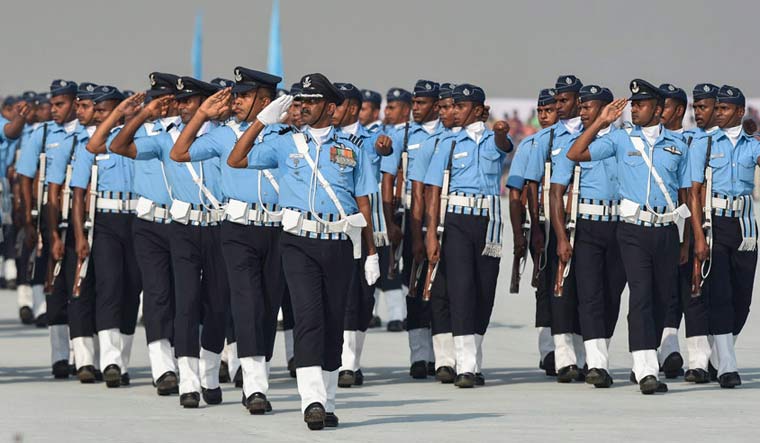In keeping with the times where technology is changing at a dizzying pace amid dynamic geo-strategic narratives, the Indian Air Force (IAF) has altered its doctrine with an eye on the future.
IAF Chief V.R. Chaudhari on Tuesday said: "Traditionally, wars are fought on land, sea and air. Today, newer domains—of cyber and space—are affecting the conduct of operations even in the traditional realms.”
“To absorb these changes, the IAF is on a path of transformation so that we can fight and win tomorrow’s wars… We have recently upgraded and revised the doctrine of the IAF to keep it relevant.”
Air Chief Marshal Chaudhari was speaking at the customary press meet before the annual air force day on October 8.
On the sidelines of the Tuesday event, a top IAF source fleshed it out to THE WEEK on condition of anonymity: “In view of certain developments including the tense relationship with China in the aftermath of the border row in eastern Ladakh and the ongoing conflict in Ukraine, we have made certain changes in the doctrine. It won’t just be limited to offensive and defensive warfare but will cover the entire gamut of operations with a futuristic outlook.”
“After a lot of in-house deliberations, the new doctrine is almost ready now and will be made public within a week. It will then be a public document.”
A military doctrine provides the framework for understanding the approach to warfare and comprises a set of principles that guide the military in support of the national objectives and catering to future conflicts by co-opting available and future technology.
The traditional position laid out in the 2017 Joint Doctrine of the Indian Armed Forces (JDIAF) says: “The character of conflict has varied with time, yet it has endured. Technology has been a major driver to the evolution of the character of conflict. Today’s stand-off precision munitions with satellite control systems have altered the physical component of conflict. The character of future wars is likely to be ambiguous, uncertain, short, swift, lethal, intense, precise, non-linear, unrestricted, unpredictable and hybrid.”
But the unresolved nature of the India-China border standoff and the ongoing conflict between superpower Russia and former Soviet member Ukraine well into its eight month is inducing a change in outlook in the Indian defence establishment.
Interestingly, on April 28, IAF chief Chaudhari had pointed out during a seminar on logistics called LOGISEM VAYU-2022: “In the force, space and time continuum, there would be a need for us to prepare for short swift wars as well as be ready for a long drawn standoff akin to what we are seeing in Eastern Ladakh.”
However, the Air Chief Marshal cautioned in the backdrop of the tri-services' ‘theaterisation-integration-jointness’ plan that while the IAF is not opposed to the effort, the doctrinal aspects of the IAF should not be compromised by the proposed structures.
“Each service has a doctrine. The doctrinal aspects of the IAF should not be compromised in any way by the new structures,” he said, adding that the IAF is being transformed into a global aerospace force.
On the standoff with China, the IAF chief said the situation will become normal in eastern Ladakh only if there is a return to status quo ante prior to the standoff and complete withdrawal of troops from all friction points.
On reports of China’s air incursions along the LAC in eastern Ladakh, ACM Chaudhari said: “We continuously monitor it by continuously enhancing our air defence efforts there. We have increased the presence of our radars and Surface to Air Guided Weapon (SAGW) systems and have integrated them into the Integrated Air Command and Control System (IACCS) network… I think we have been able to signal our intent and state of readiness with the actions taken so far.”
At the same time, the chief admitted that notwithstanding upcoming fighter aircraft induction, the IAF won’t reach the sanctioned strength of 42 fighter squadrons anytime soon. “We will still be at 35-36 by the middle of next decade.”
The IAF is the world’s fourth largest air force in terms of personnel and aircraft and it operates in an air space spanning more than 40 million cubic km.




